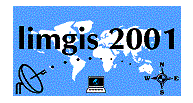


PREFACE |

|
The
freshwater ecosystem is dynamic and depends on various interdependent and
inter-related factors that are vital for its existence and role in the
maintenance of ecological balance. Concern for the declining water quality and
impaired ecological conditions in many aquatic ecosystems caused by various
anthropogenic activities has necessitated greater stress for limnological
investigations. Understanding the nature and extent of the problems, quantified
sources of pollution, and relationships for determining the response of aquatic
ecosystems to various levels of pollution is required for formulating a variety
of control and restoration measures. Integrated studies are required to
understand the full range of human impacts on aquatic ecosystems. This monograph
gives an account of the essentials of limnology, covering various aspects to
study inland waters as complex ecological systems. It helps in determining
significant risks to aquatic ecosystems; and deciding how to manage those risks
effectively requires advances in fundamental science and the application of this
knowledge to practical problems. Achieving these goals will require better
interaction among academicians, water resource managers and public.
The
term geographic information system (GIS) is used generically for any
computer-based capability for the manipulation of geographical data. All the
data in GIS are georeferenced, that is, linked to a specific location on the
surface of the earth through a system of co-ordinates. GIS can process
georeferenced data and provide answers to questions involving the particulars of
a given location, distribution of selected phenomena, changes that have occurred
since a previous analysis, impact of a specific event or the relationship and
systematic patterns of a region. An attempt has been made in section two to
describe the most important concepts of GIS to give the reader the total picture
of the spatial and temporal tools and their application to limnological studies.
Time
lags of longer than a year (temporal) can exist between cause and effect or
until ecological responses to a disturbance permeate natural systems. These time
lags occur for many reasons: certain biological and physical processes simply
take time, biological relics persist even after conditions change, movements
across the landscape take time, the simultaneous occurrence of two or more
necessary conditions for an event or process to occur can be rare, and a chain
of events accumulates the lags between cause and effect events.
The continued support of the Ministry of Environment and Forests, Government of India, The Commonwealth of Learning (COL), Canada, and the Indian Institute of Science, Bangalore, in our research endeavours is gratefully acknowledged. We thank Prof. N. V. Joshi and Prof. Rajasekara Murthy, for their sustained support and encouragement. We thank Mr.Kiran R., Mr. Murari Varma and Ms. Deepa R.S. for assistance in compilation of information on GIS, Mr. Joshua David for editorial assistance, and Mr. Rajanikanth for the sketches. All the members of the Energy and Wetland Research Group contributed wholeheartedly to this endeavour.
Energy and Wetlands Research Group – Members
Co-ordinator

